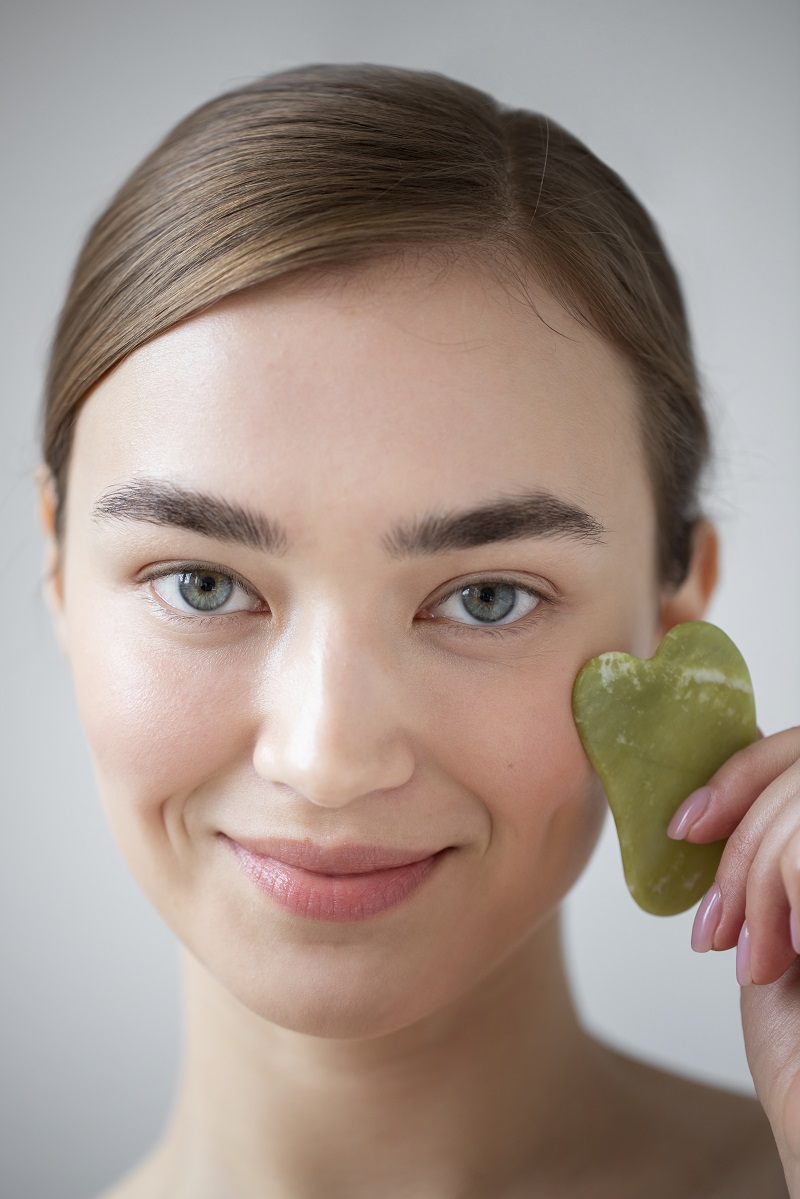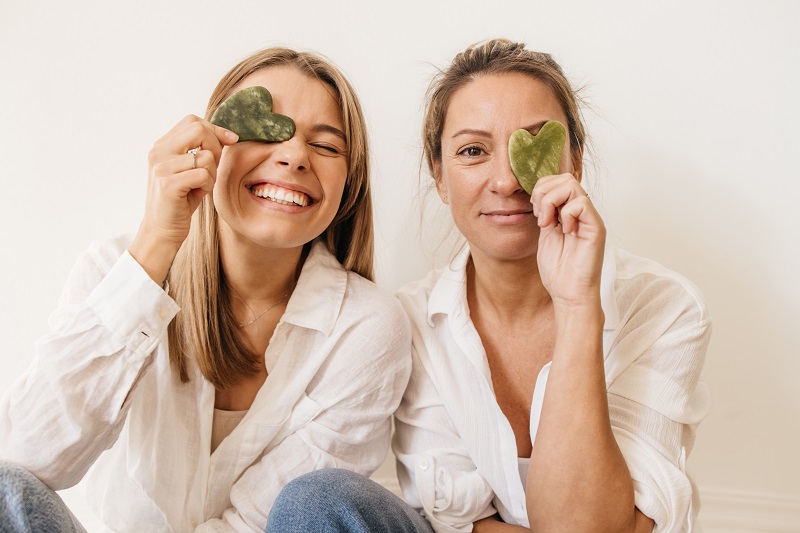Many gua sha enthusiasts report that this beauty care method can reduce wrinkles, and can firm and even sculpt the face. But what exactly is it and does it really work?
Social media has been flooded with content about the gua sha method for a while now. If you just open up any platform, chances are you’ll immediately find an influencer showing you how to use the stones. However, gua sha is not a modern invention: it is a tool of traditional Chinese medicine that has been used for thousands of years. It involves massaging the facial skin with a crescent-shaped stone, which can be rose quartz or jade. This massage is thought to promote chi, which, according to Chinese medicine, promotes energy balance and movement in the body.
Moving the stone activates certain acupressure points, thus releasing tension accumulated in the muscles. Beauty gurus who use this device, which is now available in drugstores, claim that it is so effective that it can even replace Botox, but it certainly reduces the amount of water that accumulates in the tissues and helps to deliver the active ingredients of cosmetics more deeply and evenly.
Is it really effective?
Although no scientific research has been conducted to prove the gua sha enthusiasts’ claims, there is no doubt that facial massage is a very good relaxation technique in itself and that it stimulates the blood circulation in the skin, which is definitely a positive effect. Constant stress is known to damage the immune system, and massage can help to relieve the consequences.
Gua sha can play a special role in this, by relieving tension in the facial muscles, such as the jaw or the forehead, and thus making you more relaxed. In fact, the effect is similar in people who have Botox injected into their chewing muscles so that they can stop grinding their teeth in their sleep, which is also a symptom of stress. Constant tension in the face can contribute to wrinkles, so counteracting this effect is definitely helpful.
A slightly less believable idea is that simply by massaging your face, the collagen content of the skin can be increased and the face can be tightened. There is only one scientific study that provides evidence for the effectiveness of gua sha that was published in 2017, but it was basically looking at the effects of regular facial massage, not specifically gua sha.

The study found that for middle-aged women, daily facial massage is indeed effective against wrinkles. This effectiveness is attributed to the fact that the active ingredients introduced by the massage are better absorbed into the skin. It is also possible that the pressure can also have an effect on the deeper layers of the skin, thereby actually increasing collagen production through physical impact alone.
Gua sha stones are often sold together with face rollers. The latter also have the ability to deliver active ingredients and refresh the face, but the shape of the gua sha allows for a more optimally targeted treatment.
How to use?
You can actually learn how to use gua sha from YouTube or TikTok, where you can find instructional videos on the correct technique of the massage. For example, this one is for beginners.
The basic principles are quite simple. You start with the neck, holding the curved side of the instrument against the skin and massaging downwards to remove accumulated fluid from the affected area. Then apply the stone on the jawline and the area around the mouth: here you should do 3-5 strokes per area, once again upwards. If you want to relax the muscles, apply more pressure, while if you just want to refresh the face, use a gentler approach.
Lay the tool flat under the eyes. Never pull the skin in this area, as it is very thin and can be easily damaged. To lift the eyebrows, draw small horizontal lines above the brow bone. To release tension in the forehead, hold the stone between the brows and gently push upwards.

